Dr. Brown’s Options+ Bottle Review
Clinically proven to reduce colic, Dr. Brown’s Options+ is the #1 pediatrician-recommended baby bottle in the US. In this review, you will find key features, our user experience, frequently asked questions, pros and cons, and feeding tips using Dr. Brown’s Options+ Anti Colic baby bottles. Recommended for newborns to 12 months of age.
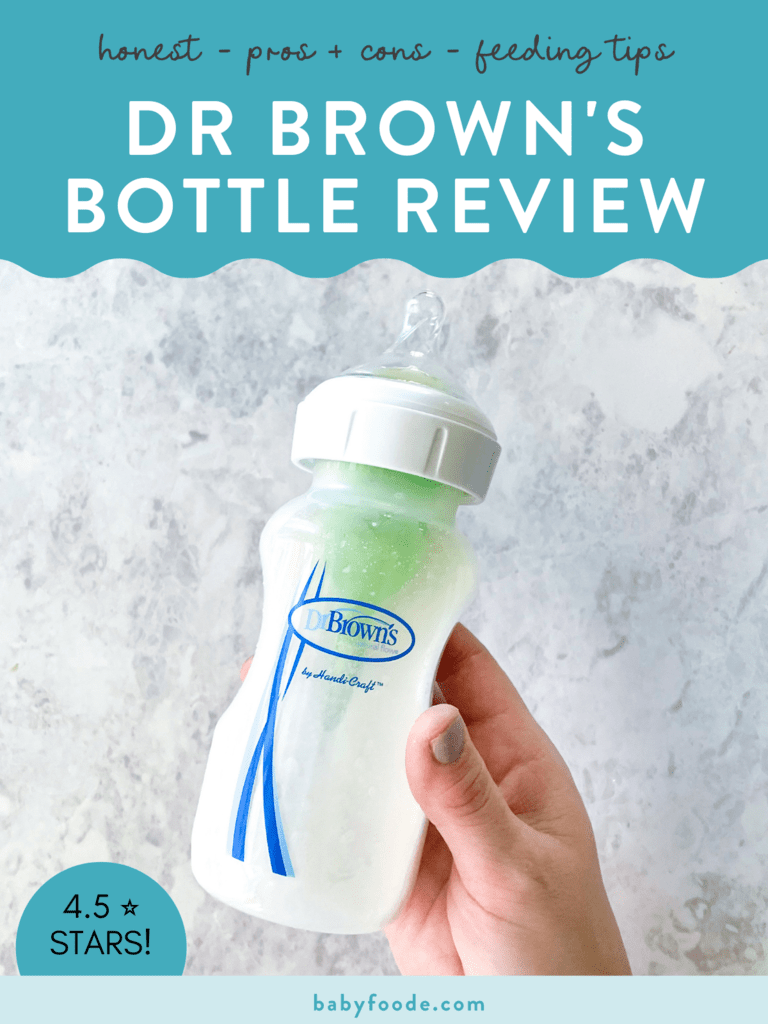
Medically reviewed and co-written by Lauren Braaten, Pediatric Occupational Therapist (OT).
Dr. Brown’s Options+ Anti Colic
As any parent can attest, babies (especially young babies) pretty much have three main jobs: eating, sleeping and pooping (well, and looking cute of course). And whether your baby’s main source of calories for the first year is coming from bottle or breast (or a combination of both), it’s only natural to want eating to go as smoothly as possible. That’s why we love Dr. Brown’s Options+ Anti Colic Baby Bottles for making your baby’s feedings an enjoyable and safe experience.
Dr. Brown’s anti-colic internal vent system helps prevent ingestion of air bubbles and eliminates the vacuum effect, which helps decrease spit-up, burping, and gas. And we know that a less gassy baby = a more HAPPY baby! (And happier parents too.) We wanted to share the happiness and give you all the information you need to know about Dr. Brown’s Options+ Anti Colic bottles in this review.

Key Features
- Clinically proven to reduce colic
- Decreases spit-up, burping, and gas
- Shown to better preserve nutrients in breast milk and formula
- Aids in digestion for a good night’s sleep
- Offers a controlled flow so that babies can feed at their own pace
- Can be used with or without the internal vent system to grow with baby’s needs
- Dishwasher (top rack) and sterilizer safe
- Recommended for newborns to 12 months of age
User Experience
Dr. Brown’s Bottles were a wonderful quality bottle for feeding my son when our breastfeeding journey did not go as originally planned. Overall, we had very minimal to no issues with spit-up, gas and colic, which I attribute to the Dr. Brown’s anti-colic system. We really appreciated the controlled flow that helped our son feed at his own pace. Any issues we had with leaking seemed to be fixed easily by making sure the bottle was not overfilled with water and making sure that the bottle cap was twisted on nice and tight.
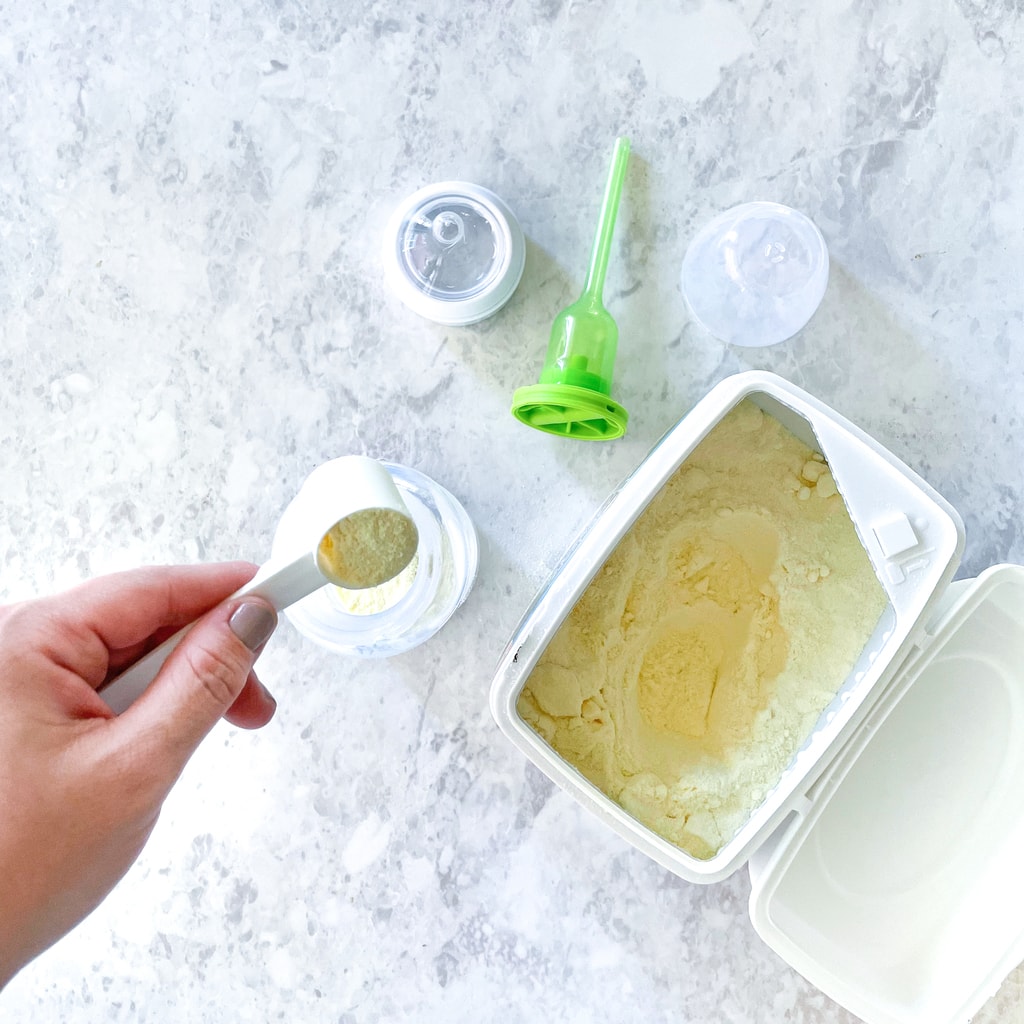
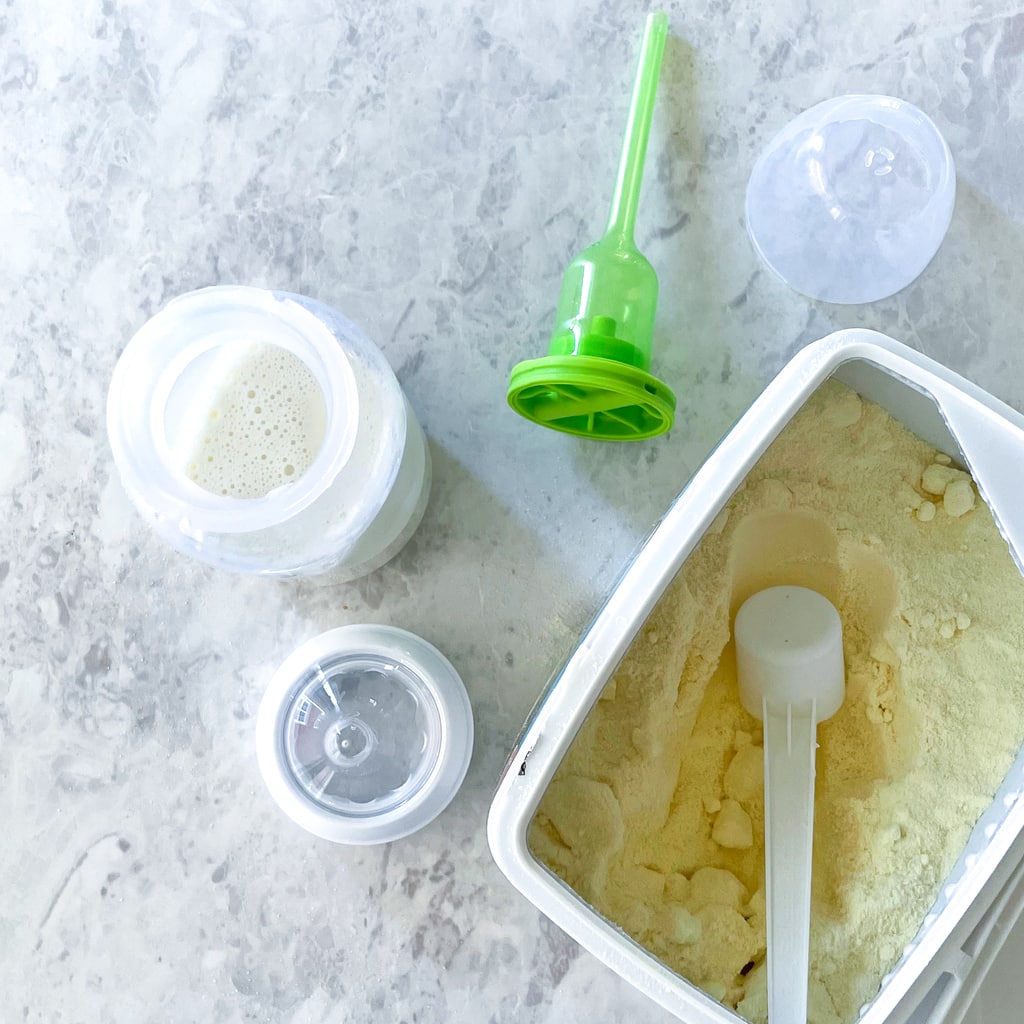
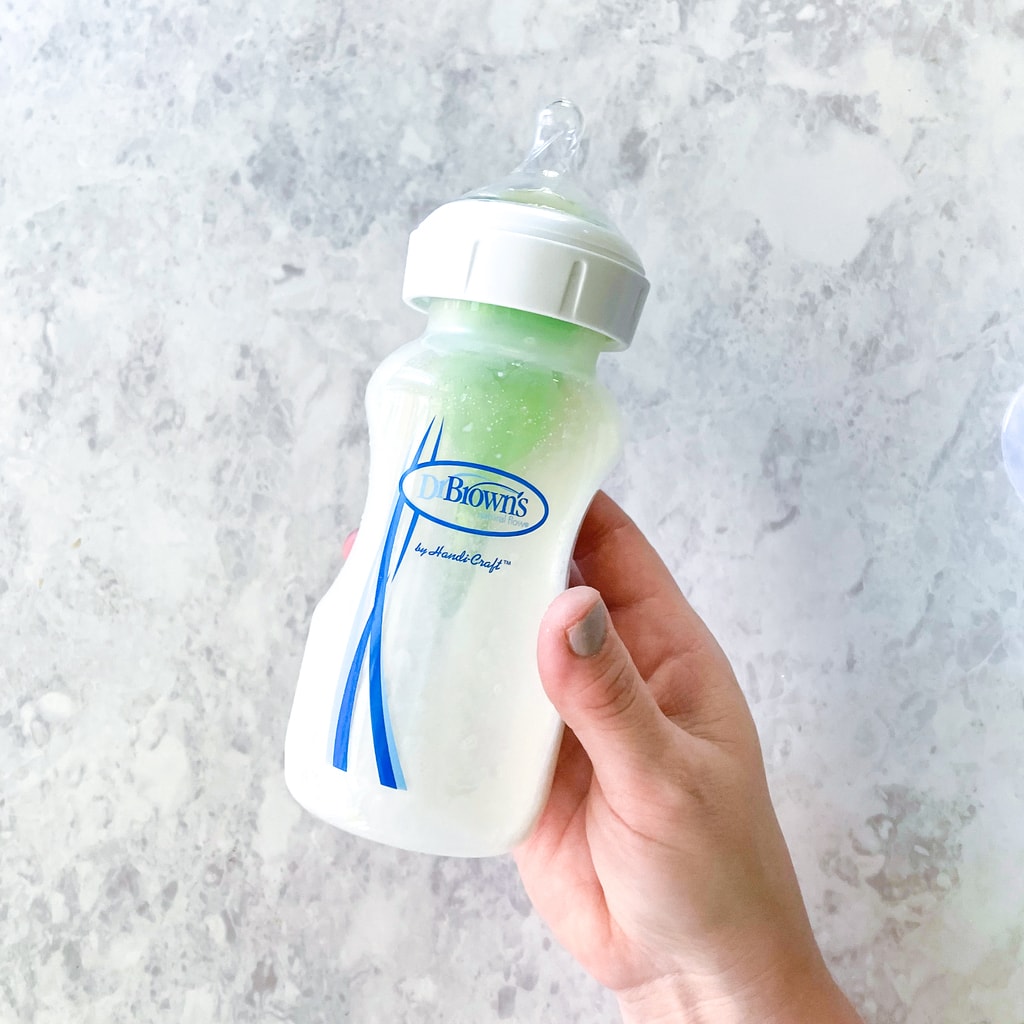
Different Types of Bottles
Options+ Anti Colic Bottle – Glass: made of durable, pharmaceutical-grade borosilicate glass, able to withstand hot, cold, and gradual temperature changes. Available in 4 oz or 8 oz and includes the removable anti-colic vent system.
Options+ Anti Colic Bottle – Plastic: similar to the glass bottle, also available in 4 oz or 8 oz, includes the removable anti-colic vent system and is made of BPA-free plastic.
Natural Flow Anti Colic Bottle: available in 2 oz, 4 oz, or 8 oz but not available in glass material. The internal vent system is blue instead of green in these bottles. The Natural Flow bottles are not made to be used without the internal vent, compared to the Options+ Anti Colic bottles.
Frequently Asked Questions
All baby bottles seem to leak at some point or another. This issue can usually be fixed pretty easily. Various reasons for leaking may be improper assembling, feeding position, a nipple level that’s either too fast or too slow, or the temperature of formula or breastmilk. Dr. Brown’s website has a helpful article with trouble-shooting options if leaking occurs with feeding, traveling, or preparation.
Yes! Both Dr. Brown’s Options+ Anti Colic bottles in glass and plastic are dishwasher (top rack) safe.
Yes! On Dr. Brown’s website, you can order additional nipples, bottle storage travel caps, and replacement parts for the internal vent system.
First, give the internal vent a quick rinse after feeding to prevent formula or milk from drying and getting stuck in the parts. If the vent can’t be rinsed soon after a feeding, use the wire cleaning brush, hot water and dish soap to clean the inside of the vent as well as the straw of the reservoir. Make sure to allow all parts to air dry fully before storing or putting back together, as moisture can get trapped in the parts.
Difference Between the Options+ Anti Colic and the Natural Flow
The main difference between the Options+ Anti Colic and the Natural Flow Anti Colic is that the Options+ bottles can be used with or without the internal vent system, whereas the Natural Flow bottles must be used with the internal vent. Color-wise, Options+ has a green vent and Natural Flow has a blue vent.
Difference Between the Standard and Wide-Neck Bottle
Standard bottles are thinner shaped and feature narrow nipples. Some babies like these bottles because it allows them to engage the entire nipple when latching. Dr. Brown’s Narrow bottles are the most recommended bottle by pediatricians and are often used in neonatal intensive care units (NICUs) and hospitals for babies with feeding difficulties. Wide neck bottles offer a wider, sloped nipple that is shaped like a breast. Breastfed babies and babies with a wider latch may prefer a wide neck bottle.
How to Clean the Bottle
- With the first use, wash the bottle, all the parts and boil the nipple for five minutes
- During daily cleaning, wash all parts in hot water and gentle detergent
- Use the cleaning brush to clean the holes in the vent and the straw-like tube in the vent reservoir
- Wash the bottle and nipple using a non-scratch sponge or bottle brush
- Let everything fully dry before storing in a clean place
- Bottle, parts, and nipple are dishwasher (top rack) safe, but ensure you clean small areas in the internal vent system prior to putting in the dishwasher to avoid mold build-up
- According to the Centers for Disease Control, sanitizing is particularly important when your baby is younger than 3 months, was born prematurely, or has a weakened immune system. In those cases, sterilizing at least once daily is recommended.
- For older, healthy babies, sterilizing daily may not be necessary if the bottle and parts are carefully cleaned after each use.
- Dr. Brown’s website recommends sterilizing before the first use, after traveling with the bottle, if milk or formula has been inside at room temperature beyond the recommended time period, if the bottle comes in contact with contaminated surfaces or floors, or when your baby is sick.

Pros + Cons
Pros
- reduces gas and burping
- helps digestion
- can be used with or without the anti-colic vent system
- the nipple venting creates a paced flow
- bottles fit most breast pumps
- available in glass or BPA-free plastic bottles
- made in the USA
Cons
- some users report leaking with the bottles (although plenty of users do not seem to have this issue)
- cleaning the anti-colic vent system requires disassembling and washing with different brush sizes
More Helpful Products
- Dr. Brown’s Clean Steam Baby Bottle and Pacifier Sterilizer and Dryer
- Dr. Brown’s MilkSPA Breast Milk and Bottle Warmer
- Dr. Brown’s Silicone Bottle Handle for Standard Baby Bottles
Feeding Tips Using the Dr. Brown’s Bottles
- Hold your baby in a more upright position when feeding, do not have them lay down to eat.
- When feeding, make sure the liquid is covering the nipple. Hold the bottle so the hole at the end of the reservoir tube is not covered by liquid.
- Know when to change bottle nipple sizes for ease with feeding. Although the nipple levels are tied to an age range (for example, 3 months+), every baby has their own feeding style, which is not necessarily a reflection of their age or size. Signs that it may be time to move up a level include: taking longer to finish eating, becoming fussy or irritated while eating, or falling asleep during feeding.
- Make sure your baby has a good latch, with their tongue under the nipple, not above it, and their lips securely sealed around the base of the nipple.
- Consider using Dr. Brown’s Formula Mixing Pitcher to prepare up to four, 8 oz bottles at a time. This pitcher has a unique blade that mixes formula quickly with no clumping and minimal air.
What Parents are Saying
Reviews
I haven’t had to buy any other bottles – this starter kit has it all. They are easy to clean and work really well. Another plus, the bottles fit Medela pump tops so you can pump right into the baby bottle. The nipples fit the Medela bottles too! Gotta love that!
-Jemi
My son had a lip tie and struggled to get a good latch on the breast and every bottle except the Dr. brown bottle. It also tremendously reduced his intake of air bubbles and really gave us a much happier baby. So thankful for this bottle. It also has a slower flow than other bottles which our son needed. Love love love. This is a great set for a gift.
-Joshua
We love Dr. Brown’s bottles! They are reasonably priced and provide such great quality. They help reduce the amount of air our baby swallows while he is eating. We recommend Dr. Brown’s to all of our friends!
-Sadie
Note: I reviewed this product because I personally think it is a fantastic product and think you need one in your life if you have a baby – this is not a paid sponsorship.
Dr. Brown's Options+ Bottle Review
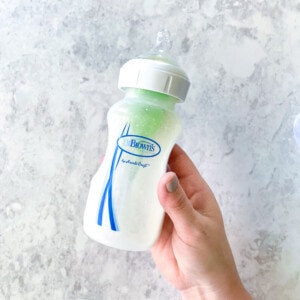
Product Name: Dr. Brown's Options+ Bottle
Product Description: Clinically proven to reduce colic, Dr. Brown's Options+ is the #1 pediatrician-recommended baby bottle in the US.
Brand: Dr. Brown's
-
Price
-
Convenience
-
Quality
Summary
Dr. Brown’s anti-colic internal vent system helps prevent ingestion of air bubbles and eliminates the vacuum effect, which helps decrease spit-up, burping, and gas. And we know that a less gassy baby = a more HAPPY baby! (And happier parents too.) We wanted to share the happiness and give you all the information you need to know about Dr. Brown’s Options+ Anti Colic bottles in this review.
Pros
- reduces gas and burping
- helps digestion
- can be used with or without the anti-colic vent system
- the nipple venting creates a paced flow
- bottles fit most breast pumps
- available in glass or BPA-free plastic bottles
- made in the USA
Cons
- some users report leaking with the bottles (although plenty of users do not seem to have this issue)
- cleaning the anti-colic vent system requires disassembling and washing with different brush sizes

